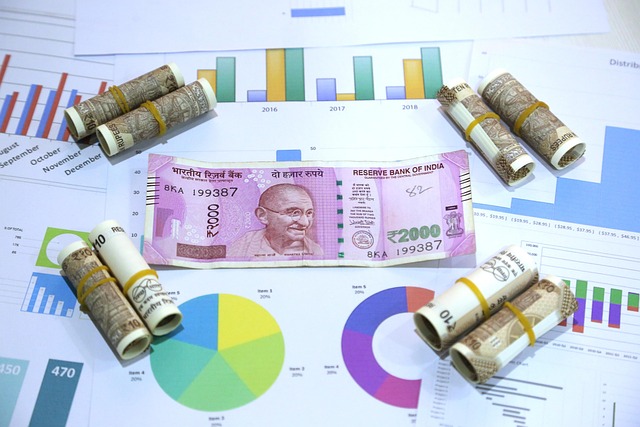Cash flow is the money coming into your business and the money going out. That’s it. It’s not about future earnings or invoices you’re waiting to be paid. It’s about actual cash, right now, moving through your business.
Now, here’s how it differs from profit. Profit is what’s left over after all your expenses are paid. You can be profitable on paper but still have a cash flow problem if payments are delayed or you’ve got too much money tied up in inventory. So profit might make you feel good, but cash flow keeps the lights on.
There are three kinds of cash flow to think about. Operating cash flow is money earned or spent from your day-to-day work like sales and expenses. Investing cash flow is from buying or selling stuff like equipment or stocks. Financing cash flow has to do with loans or money from investors.
Understanding all three helps you see where your money’s really going — and what needs to tighten up when funds get thin.
Running a vlogging business is more than pointing a camera and pressing upload. Behind every successful channel is a string of daily expenses that don’t go away just because engagement dips. Staff salaries, rent for studio space, subscriptions to editing tools, payments to freelance editors or animators—these all need to be covered, whether your last video tanked or topped the charts.
Then come the big decisions. Do you hire a second shooter? Upgrade to a cinema camera? Rent a larger workspace? These are all growth moves, but costly ones. And the pull to expand fast is strong—but it takes a stable financial foundation to make that leap without burning out or spiraling into debt.
That leads to the real problem: cash flow. Regular revenue is your lifeline. Borrowing can offer short-term relief, but it’s rarely a solid long-term fix. Relying on credit to float your ops month after month just delays the day you have to tighten the belt.
In other words: vlog like a creator, but budget like a business. That separation is what keeps your channel live—and growing.
Cash flow chaos doesn’t usually arrive all at once—it builds quietly. Start with late payments and unpaid invoices. Maybe a sponsor takes longer to pay, or a brand deal falls through. It might not seem like a big deal at first, but those delays pile up fast when bills don’t wait.
Then there’s inventory. Many creators selling merch or physical products overestimate demand. Now they’re stuck with a garage full of hoodies that won’t move. It’s not just lost money—it’s tied-up capital you can’t reinvest.
Seasonal dips are another stress test. Views drop, ad revenue dries up, and surprise expenses hit when you’re running lean. If you’re not planning ahead, even one bad month can throw off your entire quarter.
The problem? Most entrepreneurs ignore the red flags. They focus on growth metrics—views, likes, subscriber spikes—and skip the financial pulse check. It’s easier to keep pushing content than to run a cash flow forecast.
Pay attention early. The signs are always there.
Money in vlogging isn’t just about brand deals and ad revenue. It’s about managing what comes in and what goes out—on your terms. First, smart invoicing matters. Set clear payment terms up front. Net 15 or upfront deposits can help you avoid waiting months to get paid. Don’t be afraid to nudge late payers. It’s your work—you’ve earned it.
On the expense side, cutting overhead doesn’t mean cutting quality. Batch filming, renting gear instead of buying, and using no-frills editing setups can save real cash. Keep things lean but efficient. That includes building a cash reserve. Even saving 10% from every payment adds up. It gives you flexibility when sponsors ghost or pay late.
Want to stay sane? Use the right tools. Apps like QuickBooks, Wave, or even Notion spreadsheets can handle your expense tracking, tax prep, and invoice chasing. Automate what you can, so you can get back to creating.
Control your money, or it will control your channel.
Cash flow forecasting isn’t just for accountants buried in spreadsheets. It’s a planning tool for creators, entrepreneurs, and small teams who want to stay ahead of financial surprises. Think of it as a map that helps you know when money will come in, when it will go out, and where the gaps might leave you exposed.
Start with the basics: list your expected income—brand deals, ad revenue, merch sales, subscriptions—and line that up against your fixed and variable costs. That means rent, gear, software fees, travel, and all the random costs that come with running a vlog or digital brand. Do it month by month. Keep it simple, but stay honest.
The key to making it realistic? Don’t forecast based only on your best days. Factor in slow months, view dips, and delayed payments. Pad your expenses a bit and go conservative on income when you’re not sure. It’s easier to make smart choices when you aren’t guessing. With even a basic cash flow projection, you’ll know when to reinvest, when to tighten up, and how to keep the lights on without panic.
More on this in this guide: The Basics of Financial Forecasting for Small Businesses.
Cash Flow Is King
Revenue looks good in a screenshot. But real businesses run on cash. It’s what pays your rent, your editor, your gear upgrades. Watching cash flow means knowing what’s hitting your account and when—not just what you’re owed.
The vloggers who last aren’t the ones chasing shiny paydays. They’re the ones making small, smart decisions every day. Like negotiating payment terms. Choosing subscription tools they actually use. Pacing new hires. These habits might not feel flashy, but they keep the engine running.
Start early. Track expenses. Save a little more than you think you need. Vlogging success isn’t just about content—it’s about running a tight, sustainable operation. Your future self will be glad you got this part right.
